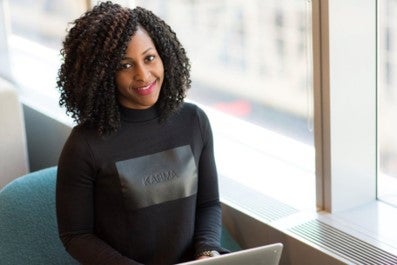Violence against women in Australia is at seriously high levels, with one in four women having experienced physical violence, and one in five sexual violence, from an intimate partner since the age of 15.[1] Indeed, one woman dies at the hand of her partner or ex-partner every single week in Australia, and despite significant efforts of governments and communities, these rates have not declined at all in recent years.[2]
So what’s the key driver of all this violence and what more can be done?
Violence against women has been shown to be inextricably linked to gender inequality.[3] In countries where men and women enjoy similar incomes, rights and access to resources, rates of violence are lower, and individuals who maintain that men and women are equal and not restricted in their roles as a result of gender, are less likely to condone, excuse or minimise violence.[4]
This is where workplaces can play a powerful role. As some of our most important and influential institutions, workplaces are key sites for driving cultural change which results in increased gender equality and respect towards women. And guess what? It’s also very good for business.
Workplaces with higher gender equality measures reap significant commercial benefits, such as improved organisational performance, increased productivity, enhanced ability to attract and retain talented employees, reputational gains (Center for Ethical Leadership, 2013) and better financial performance. (McKinsey and Co. 2018)
So what does it take to drive organisational cultural change towards gender equality and respect? There are five key ingredients:
- The commitment of leaders and staff
- Workplace conditions (policies and procedures)
- A culture free from sexist and discriminatory attitudes and behaviours
- A workplace that supports staff and stakeholders who experience violence
- The integration of gender equality into core business
The most important of these is organisational leadership and having someone within the organisation to drive the changes. And the good thing is - all the resources needed are freely available on the Our Watch website.
Our Watch Workplace Equality and Respect endorsed trainers are available nationwide to assist with this process. So why not take the first step today?
Let’s stop feeling helpless about the persistent rates of violence against women in our society. Let’s do something today to Change the Story. Alternatively, you may wish to consider inviting Women’s Safety NSW’s chief executive to speak at one of your upcoming events. More information may be found on the Women’s Safety NSW website here.
About the author
Hayley Foster is an endorsed trainer for Our Watch and the Chief Executive Officer of Women’s Safety NSW, which is a peak body for frontline domestic and family violence services supporting around 50,000 women and their children each year across NSW impacted by violence and abuse.
Women’s Safety NSW advocates for legislative, policy and cultural change to increase women’s safety, justice and wellbeing in the context of domestic and family violence. Women’s Safety NSW relies heavily on law student volunteers, pro bono support and donations to fulfil its important work.
Read some of the organisation’s recent wins here. Donate here to support their important work.
[1] Australian Bureau of Statistics, Personal Safety Survey 2016.
[2] Australian Institute of Health and Welfare 2019. Family, domestic and sexual violence in Australia: continuing the national story 2019—In brief. Cat. no. FDV 4. Canberra: AIHW.
[3] United Nations Women (2011) In pursuit of justice. Progress of the world’s women, http://www.unwomen.org/~/media/headquarters/attachments/sections/ library/publications/2011/progressoftheworldswomen-2011-en.pdf.
[4] Heise, L. and Kotsadam, A. (2015) Cross-national and multi-level correlates of partner violence: An analysis of data from population-based surveys, Lancet Global Health, 3, pp. 332–340. See ‘The gendered drivers of violence against women’ in this section, and Framework foundations 2 for further detail.



